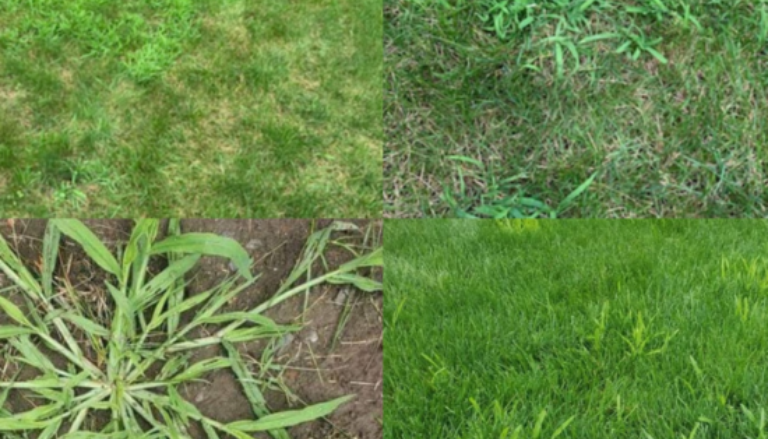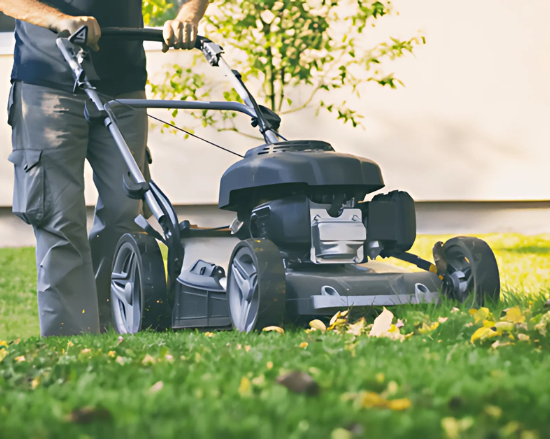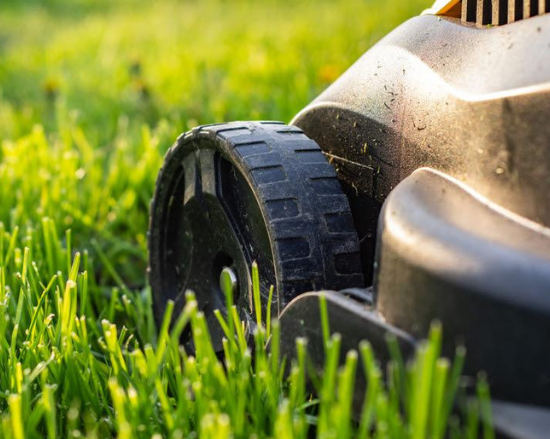In this text, you will learn everything you need to know about this very common weed in Quebec that could appear on your lawn. In addition, you will discover the solutions available to get rid of it.
To help you identify crabgrass, we’ve illustrated images of it up close and in the distance above.
Basics on crabgrass:
- It is important to understand that crabgrass is an extremely common weed in Quebec.
- This weed is annual, which means that as soon as the temperatures cool (September-October) it will die and disappear on its own.
- It will leave behind a lot of seeds that can, if conditions are right, reseed (grow back from seeds left over from previous years).
- It is in the same family as grass (the gramineae family). Therefore, the varieties of grass we normally grow, and this weed (crabgrass) are distant cousins.
- It will germinate (start growing) when the temperatures warm up. So, you never see it early in the season (April, May, and early June). * Be aware that special weather conditions (heat and early heat waves) may cause it to appear more than usual. Normally, you will be able to see it in July/August (usually the hottest months).
- It can multiply if conditions are right: for example, a period of drought, a non-irrigated lawn (that is not watered💧), a lack of rain, a lawn that is not dense (thin), sparse areas (that should have been seeded) or when an insect such as the chinch bug is present (the insect will thin the lawn and crabgrass can easily spread).
- Because it is in the same family as grass, there is no curative treatment (to eliminate it if it is already present on your lawn). The only treatments available to treat crabgrass in Quebec are preventative treatments.
- ⚠️ Other weeds may look like crabgrass but are not. For example: couch grass, bentgrass, bromegrass, etc. These are not annuals and therefore do not die each year. Preventive treatment will not work on these. Be aware that crabgrass is much more invasive than other grasses.
The different solutions to get rid of it
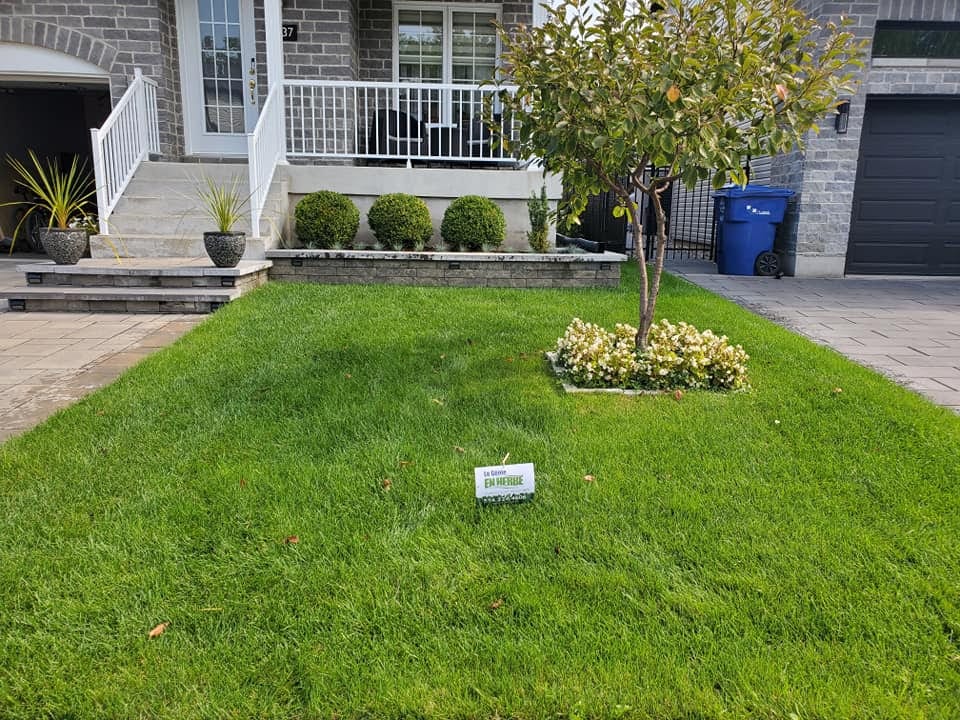
1.The preventive treatment
The best way to get rid of it is to use the preventive treatment that Le Genie en Herbe is pleased to offer you. The treatment is pre-emergent, which means that it will be applied before the seeds germinate. It will create a barrier to prevent crabgrass from germinating and will ensure coverage for the entire season. The treatment is very effective.
The disadvantages of this treatment
First of all, even if the treatment is highly effective for prevention, it is ineffective when crabgrass is already visible on your property. If you wish to benefit from the treatment, it is important to tell us before the season starts.
Secondly, the treatment will prevent good grass seed from growing. So, if you were planning on seeding in the spring, you will have to make a choice between seeding or using the crabgrass preventive treatment. Be aware that you can always do the seeding in the fall if it is not a priority in the spring. If you wish to reserve your spot for next year, please let us know by replying to this email. We will add a note to your file for next season so that we can contact you before the season starts to send you a quote for this treatment.
Keep in mind that the treatment is very effective, but that in some cases it may not be 100% effective. For example, when you are carrying out work, it could affect the soil and remove the protection offered by the treatment (installation of a peat roller, digging for a pipe, adding soil that could be contaminated, etc.)
P.S. Please note that we do not offer the crabgrass treatment to new members unless you tell us. Since the treatment is preventive and we don’t know if your yard is prone to crabgrass, we don’t want to sell you a treatment that may not be necessary. Also, since most new members have poor soil conditions and many issues, we recommend seeding instead of treating.

2. Pulling the weeds out
If you did not opt for the crabgrass preventive treatment and crabgrass has found a way to take hold, you can pull it out. You need to pull out as much of the root as possible, and ideally, pull it out completely. To do this, I recommend that you remove them after a rainy day, when the soil is still wet, this will make your life easier. Ideally, remove them when they are just starting to grow (the sooner you tear them off, the faster you can regain control). Also, I recommend seeding in the areas where they were removed. Finally, it is best to pull them out before they go to seed to prevent them from multiplying.
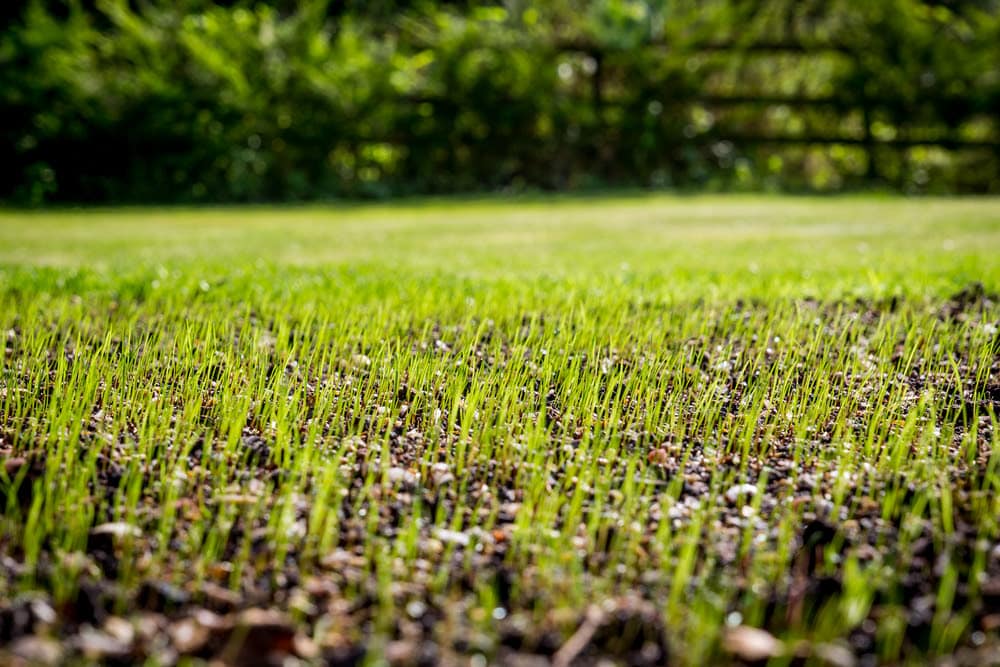
3. Seed very early in the season and ensure that the seeds grow and densify the lawn as much as possible.
Crabgrass is not able to grow in areas of dense turf. Normally, if there are no holes or sparse areas, crabgrass will simply not be able to grow (this works very well). However, if your seeding attempt fails, it could increase the problems. Good quality soil used in your seeding will benefit this weed.

4. Provide the ideal conditions for your lawn
Provide the ideal conditions for your lawn and make sure you do not stress it. A stressed lawn is, in fact, a lawn that has suffered a shock or that does not have easy conditions to be healthy. For example, mowing too short during arid periods (hot and dry) or a lack of water during long periods (no watering). When the lawn is stressed, it tends to be much more susceptible and loses its density. It will therefore let crabgrass germinate and gain ground. A healthy, irrigated lawn will prevent crabgrass from spreading easily.
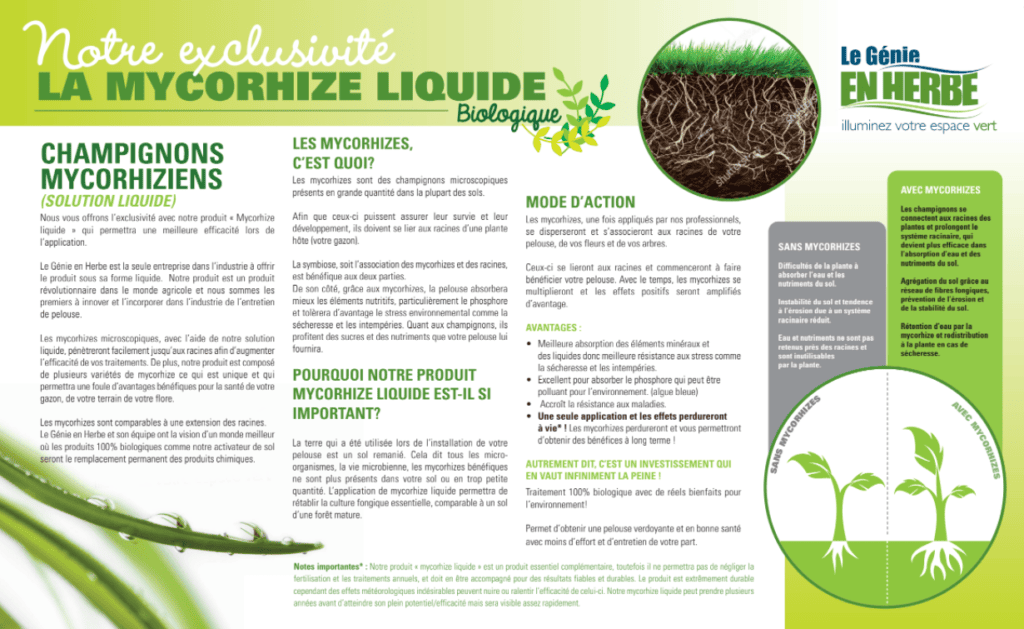
5. Doing a soil aeration or mycorrhiza treatment
This will help your lawn’s root system enormously. It will make your lawn much stronger and less likely to be stressed.
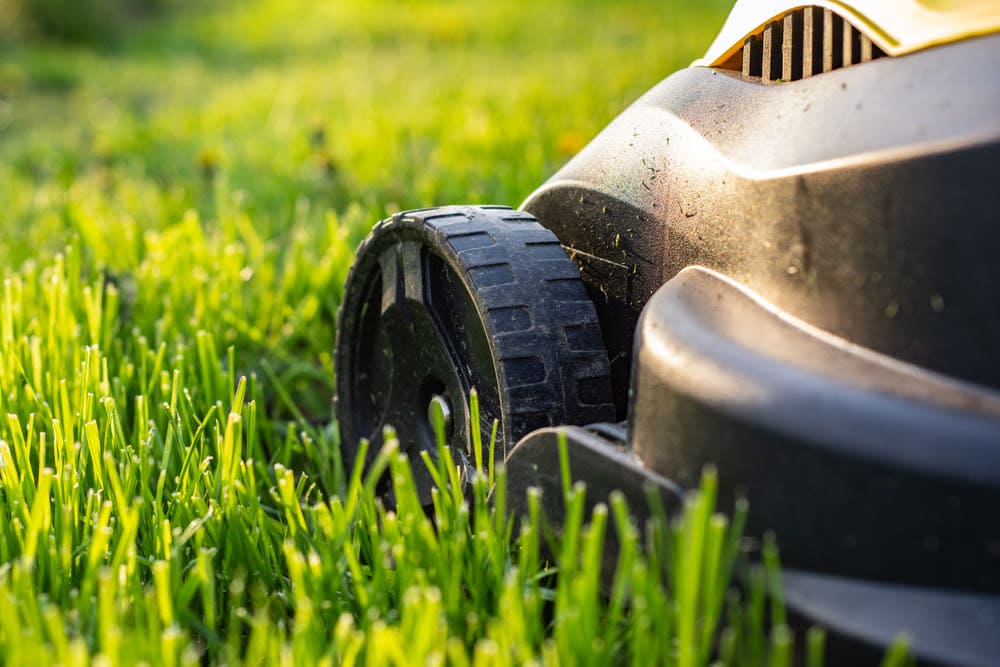
6. Finally, avoid mowing too short
Short mowing does not promote deep rooting, making your lawn much more vulnerable to drought.

The whole team thanks you for your confidence and we wish you a great summer!

